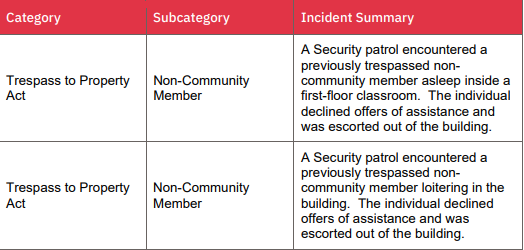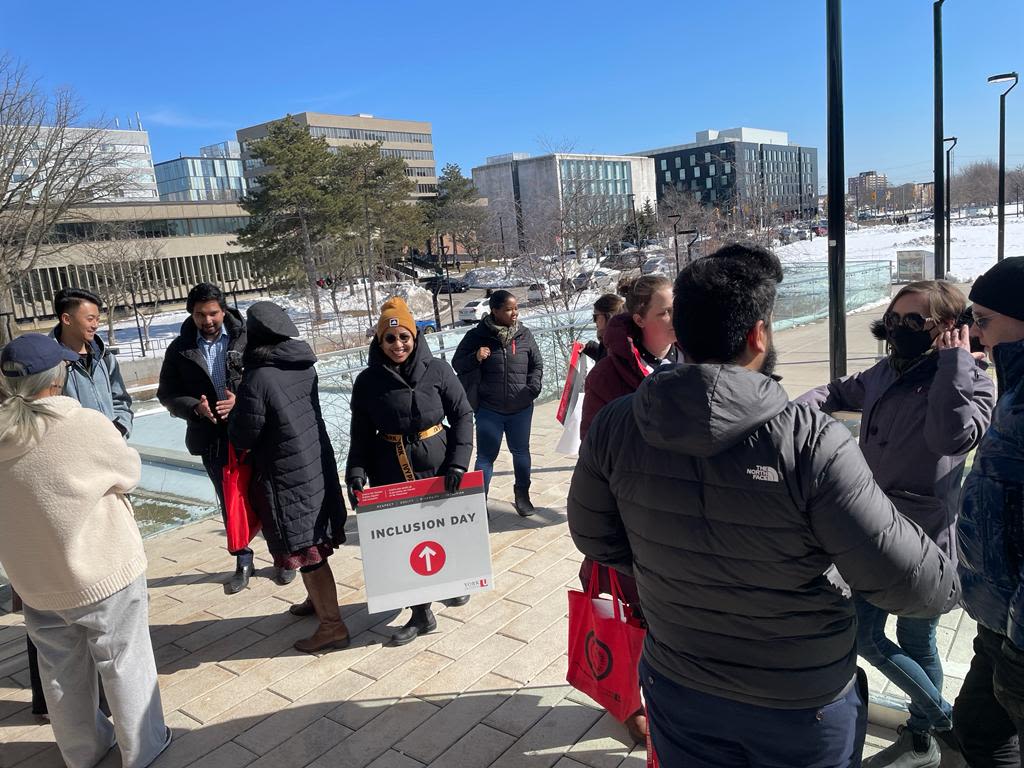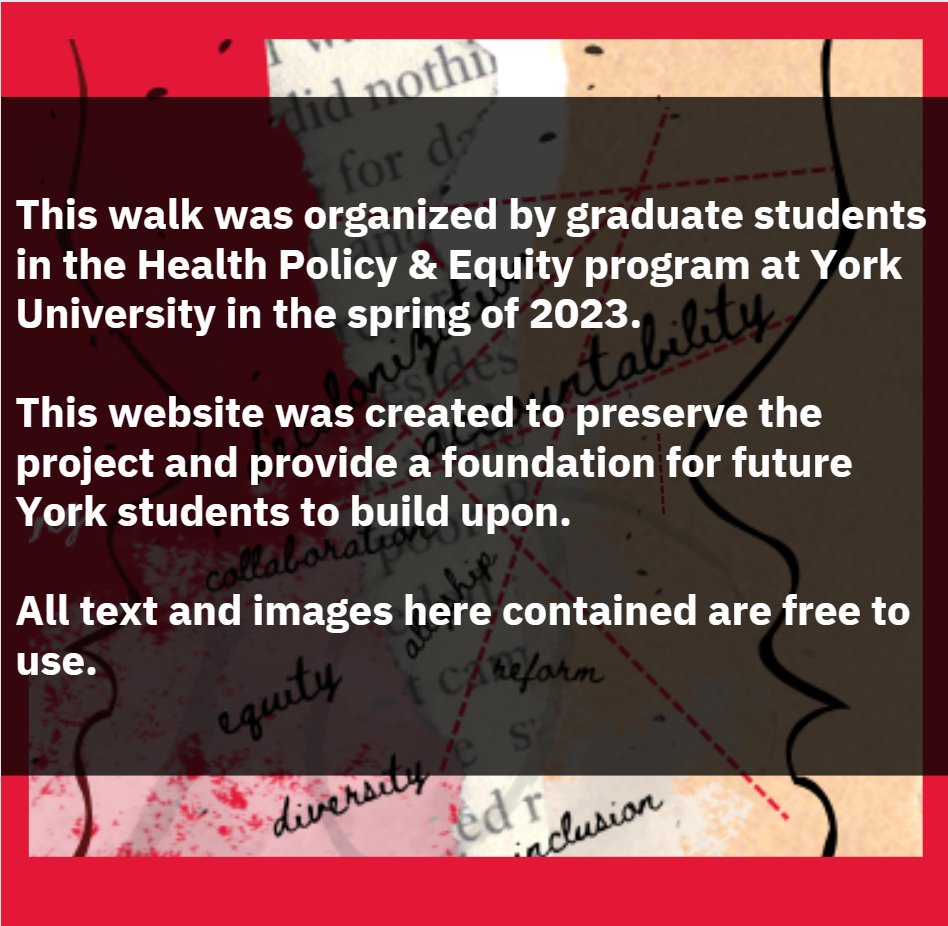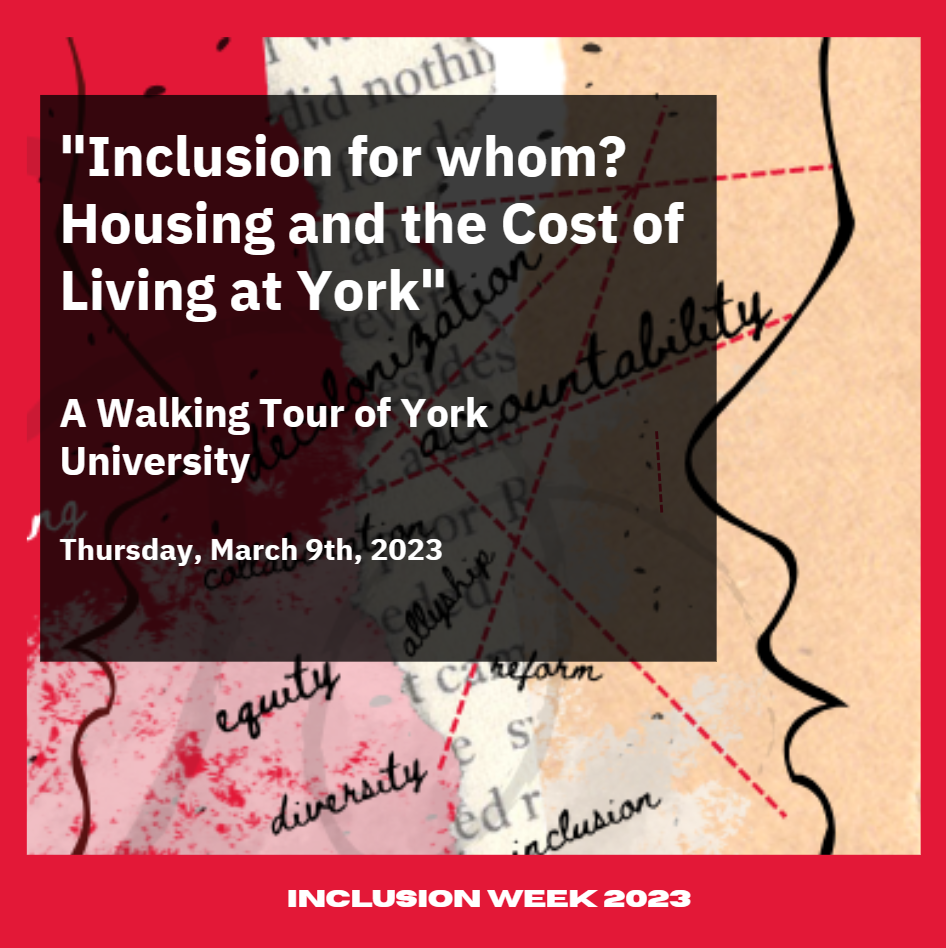
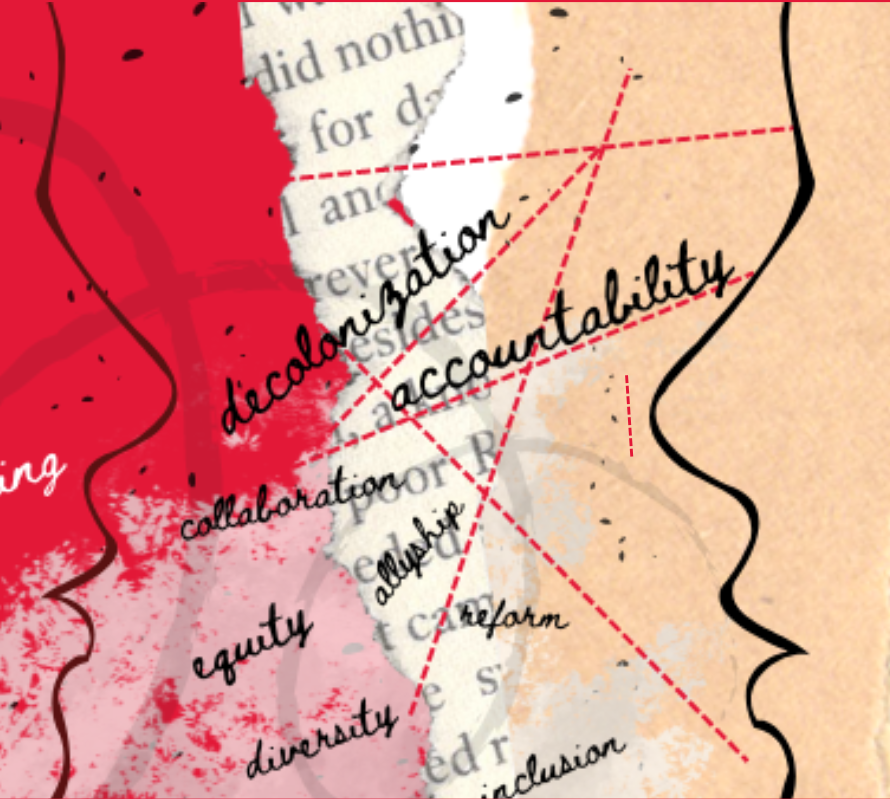
The walking tour "Inclusion for Whom?" was an event organized for York University's Inclusion Week 2023. The purpose of the event was to trouble institutional narratives of "inclusion" and "community" in the context of an ongoing housing and cost-of-living crisis at York University and in Toronto.
Our walk takes us through the central area of York University campus. It consists of six stops or "discussion points," and begins in front of Vari Hall, where participants gather at the designated meeting spot.
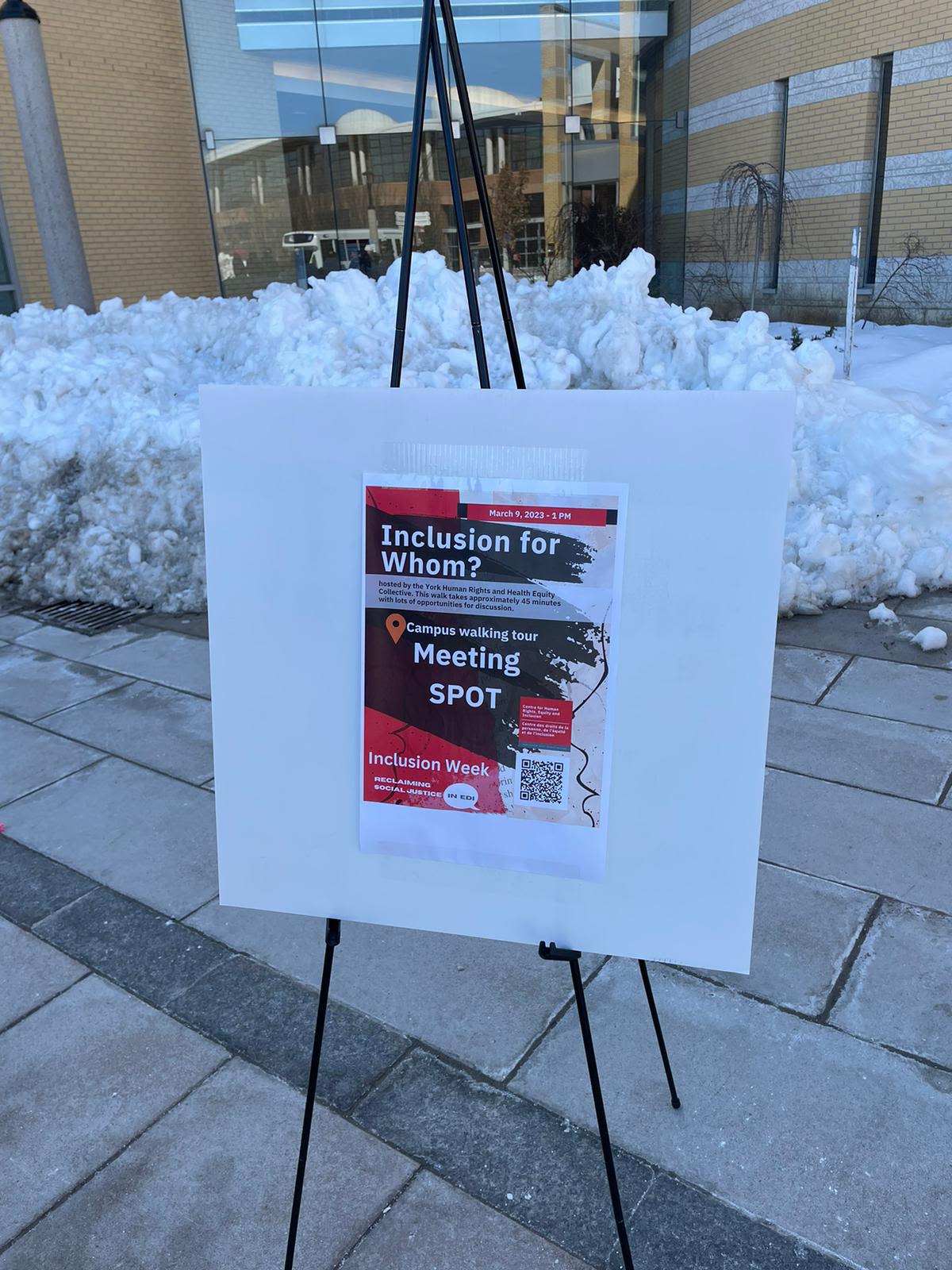
We then head to the first stop on our tour: Kaneff Tower.
STOP NUMBER ONE: KANEFF TOWER
Ignat Kaneff was a Bulgarian-Canadian entrepreneur and philanthropist, best known in Canada as one of the country's most prominent real estate moguls. Born in 1928 in Bulgaria, Kaneff immigrated to Canada in 1951 and started a career as a construction worker. He eventually founded his own construction company, called Kan-Arm Construction, in 1958. The company quickly grew and diversified into real estate development, acquiring and developing a vast portfolio of commercial and residential properties across Canada and the United States. His firm became one of the largest privately held real estate companies in Canada. He also became a prominent philanthropist, supporting various educational, cultural, and medical institutions in Canada and Bulgaria. Kaneff passed away in 2019 at the age of 91.
Kaneff Tower is one of two prominent buildings on York University campus to bear Ignat Kaneff's name. The other, the Ignat Kaneff Building, is home to the prestigious Osgoode Law School. The latter was named in recognition of a $2.5 million dollar donation made by the Kaneff corporation. It is not clear how much was donated for the naming of this tower, if anything. Ignat Kaneff was also awarded an honourary degree from York University.
Located on the second floor of Kaneff Tower is The Canadian Observatory on Homelessness (COH). Established in 2010, COH is dedicated to conducting and mobilizing research on homelessness and housing insecurity in Canada, with the goal of ending homelessness in the country. The observatory works closely with academic researchers, policymakers, service providers, and people with lived experience of homelessness to produce evidence-based solutions to homelessness and to advocate for policy changes that can support the most vulnerable members of society. COH conducts research on various aspects of homelessness, including the causes, impacts, and potential solutions to the issue, and it provides a range of resources, tools, and training opportunities to support homelessness prevention and response efforts across the country. COH is considered a leading source of expertise and knowledge on homelessness in Canada, and its work has helped to shape public policies and programs aimed at addressing this critical issue.
We chose to include this stop on our tour because of the contrast between the name on the outside of the building (a wealthy housing developer) and the work being done inside of it (research with/for populations experiencing homelessness). We see this as an interesting allegory for who is and isn't included in the York University "community" and the tensions of inclusion in an institutional context.

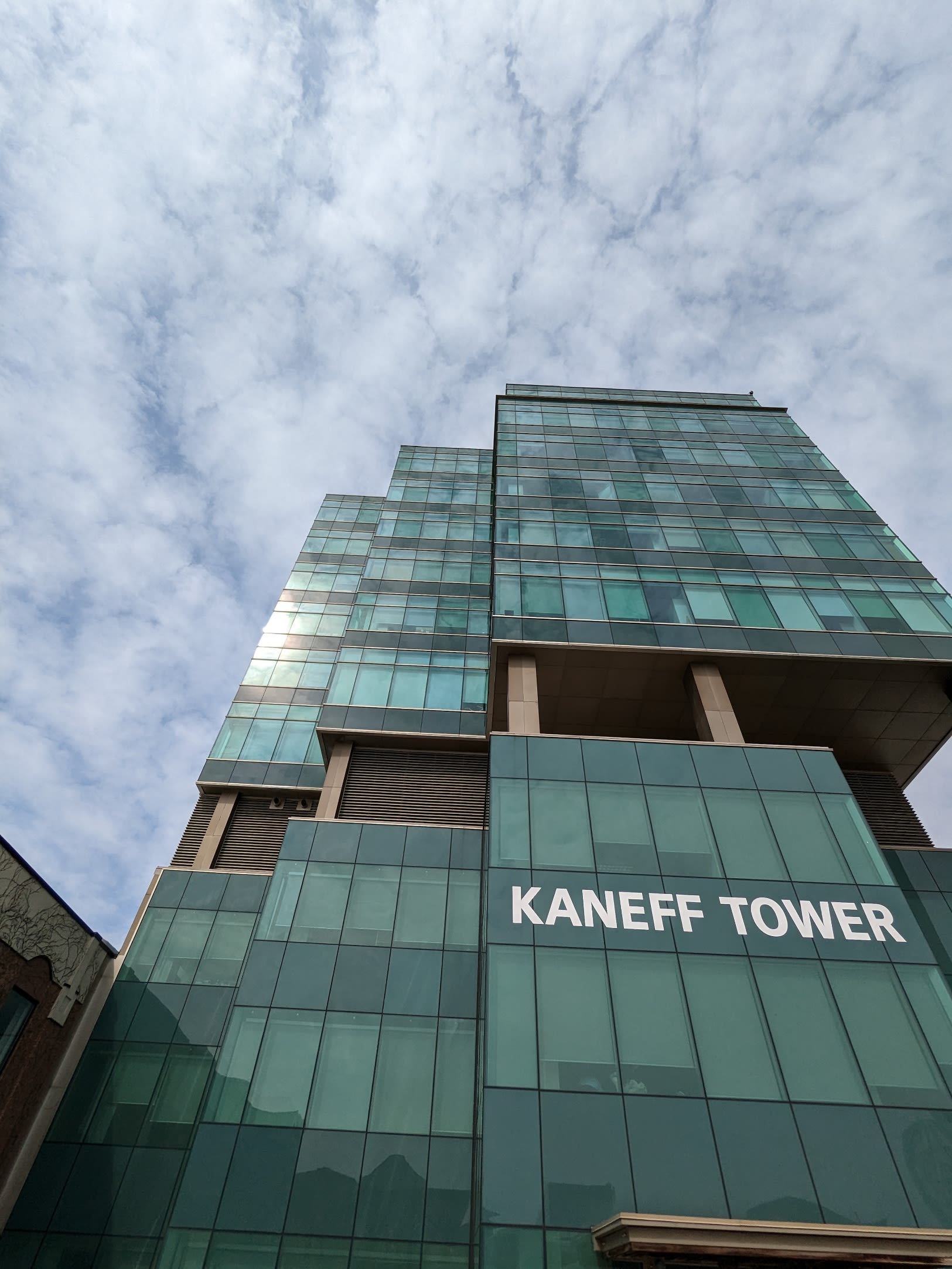
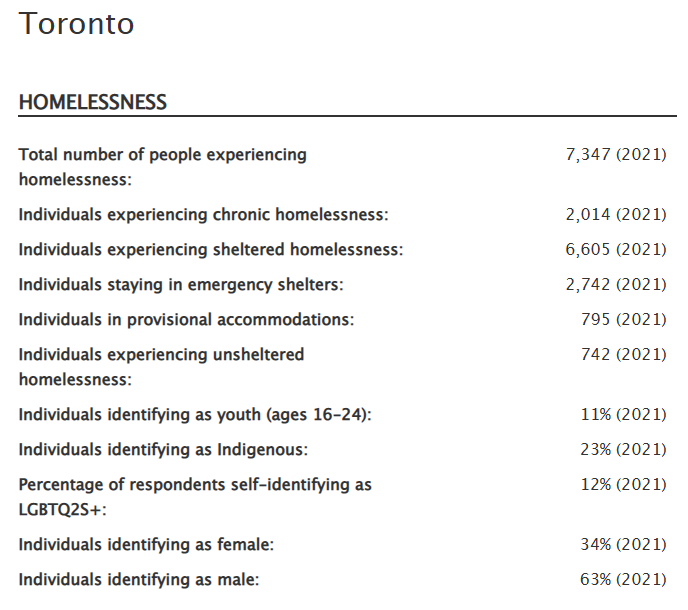
Now onto our second stop: York University subway station.
STOP NUMBER TWO: YORK UNIVERSITY SUBWAY STATION
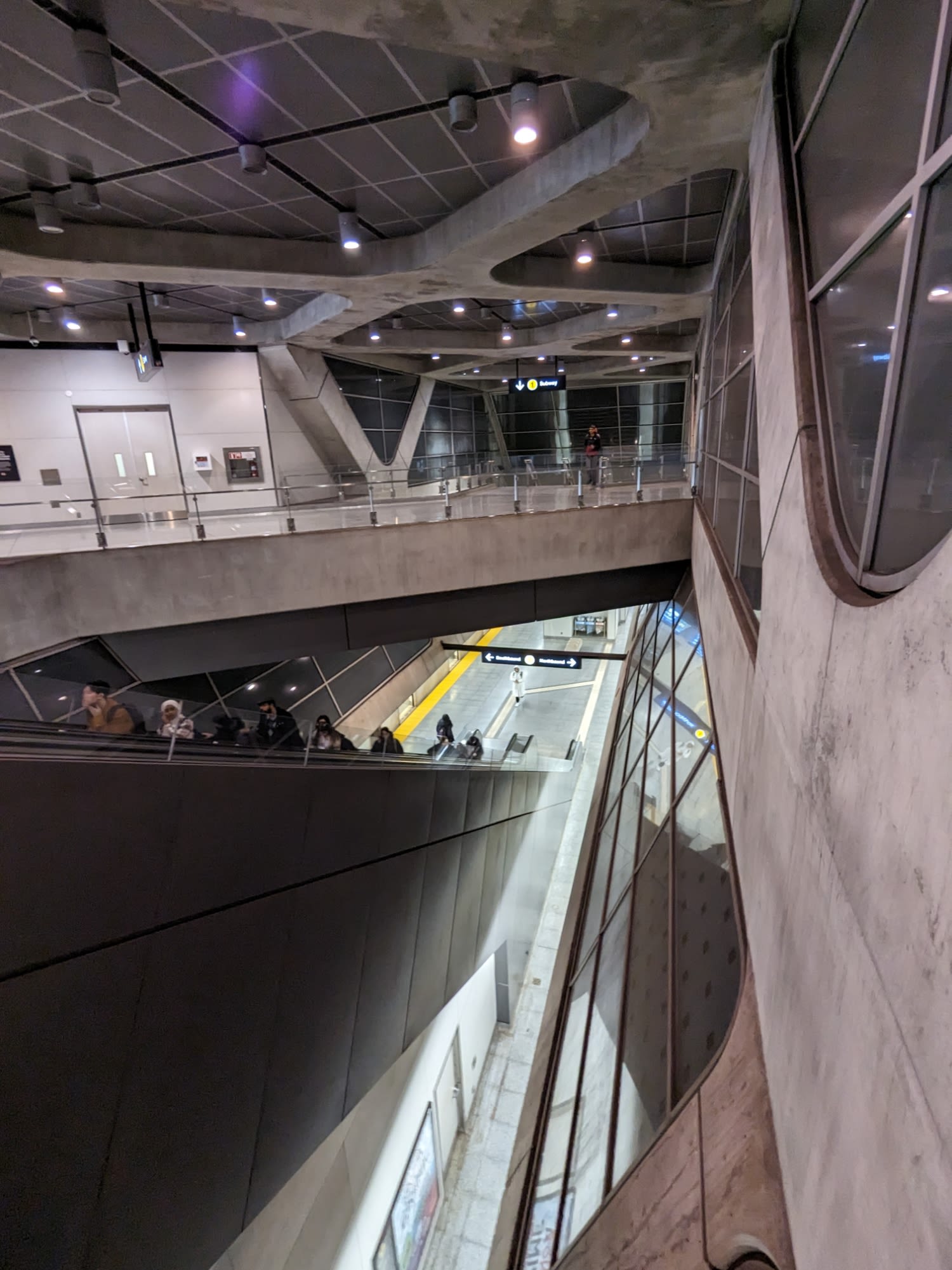
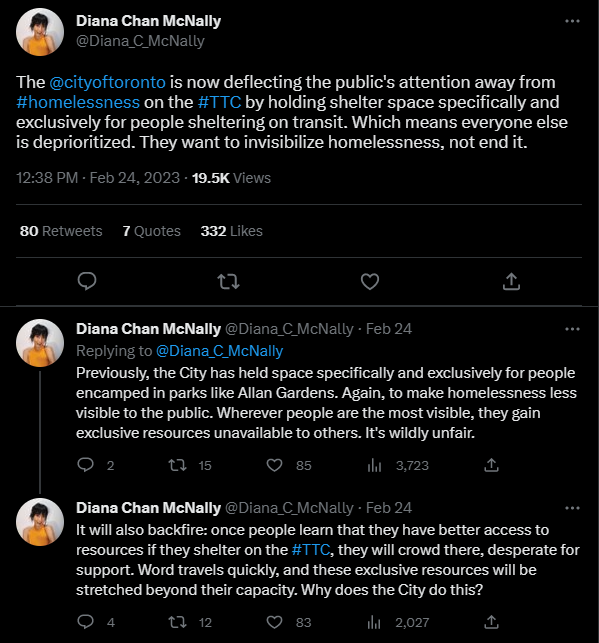
York University Subway Station is a stop on Line 1 Yonge-University of the Toronto subway system. The station is situated in the heart of York University campus. As such, the station serves as a major transportation hub for students, staff, and faculty of the university, as well as for commuters and visitors to the area. The station was opened in 2017 as part of a major expansion of the subway system, which included the addition of six new stations.
In addition to serving the university community, the station also provides connections to local bus routes and to the Viva bus rapid transit system, which serves York Region and other parts of the Greater Toronto Area.
With such extensive connections to the rest of the city and region, York University subway station has also made the campus more accessible to people experiencing houselessness. Many such people chose to come to campus, as it offers relative ease-of-access to safe, warm indoor spaces, the YFS food support centre, and a sense of community. Unfortunately, the overwhelming institutional response to this has been one of securitization and violence.
A rise in houselessness and the lack of capacity in the city's shelter system has also led to an increase in the number of people taking shelter on the TTC itself, especially during the winter months. This makes houselessness more visible and conflicts more common. After several recent high-profile acts of violence on the TTC, significant media attention was directed to unhoused people and people experiencing mental distress on the transit system. Housing advocate Diana Chan McNally reported that, instead of addressing the structural causes of this issue (including the lack of available shelter spaces), the city began working with the TTC and Toronto Police to prioritize those sheltering on the subway in the cue for shelter spaces. This is an example of how the government responds to the visibility of people in distress, but does little to address the causes of that distress.
The longest walking distance of our tour brings us to our third stop: The Quad @ York.
STOP NUMBER THREE: THE QUAD AT YORK
The buildings known as The Quad comprise what York University describes as a "premium student housing complex" for students seeking on-campus residence. What makes The Quad different from say the Pond Road residence across the street is that it was privately developed and managed due to a public/private partnership. A partnership that has become pretty common for student residence development in response to cuts to public funding for post-secondary institutions in the 70s and early 80s. While the Quad's "urban" design and numerous amenities seem appealing, it has also created a multitude of problems for students seeking affordable housing.
For decades it has become well known that York University has proportionately fewer on-campus student housing beds for its student population when compared to other institutions. So to offset the demand for housing, instead of developing new public residences with affordable housing options, York sought the financial incentive of the private sector. Brandishing the banner of luxury, York has instead ultimately limited the number of housing options viable to low-income students. In 2020, the average cost of living at the Quad exceeded the 1300$/month mark which, to put things into perspective, would accumulate to more than double the average yearly cost of tuition for a full time student. Furthermore, the cost of rent is also pegged to average market rents and consequently are likely to increase with consistent trends in rent costs. Looking at The Quad's current estimated pricings on their webpage, students will scarcely find options under the 1500$/per month per bed price point. In addition to this, the York Apartments which should provide cheaper alternatives, are consistently at capacity and it has turned the residence application process into a gamble on whether or not housing is even available.
The circumstances of unaffordability could not be any less of a concern for York however, as a phase 2 expansion has recently been completed by the same developers. This expansion can be seen just to the East of the existing buildings, also clad in all black, a colour fitting of the grim circumstances of housing at York. While these residences do fail to deliver affordable housing, it is also important to note that it also forgoes any long-term prospects for affordable housing in its place. Housing initiatives since the Quad's inception has been focused on private sector expansion, setting a dangerous precedent for all future projects. The broadening of privately owned "new" Purpose Built Student Accommodations, like the Quad, will only perpetuate the demand for affordable accommodations and push incoming students away from campus and into a hostile unprotected renters market. Such circumstances are created due to a lack of tenant protections linked to Ontario student status.
When reviewing information on the Quad, one notices that the residences consistently identify themselves as a student housing "community", one that is distinct from the broader York community. They even have their own community advisors that host social events and help in fostering a sense of togetherness among tenants. Although the community consists of students, the common denominator is that of wealth and class. Those that cant afford to live in the scarcely available housing are left seeking accommodations elsewhere. This represents an exclusion from social integration that creates drastically different educational experiences.
The York Affordable Housing Committee is organizing a petition to hold a levy referendum in order to vote on creating affordable, co-operative housing. For the sake of clarity, this is a petition in order to hold a vote regarding affordable housing options at York. This petition can be found at the link above.
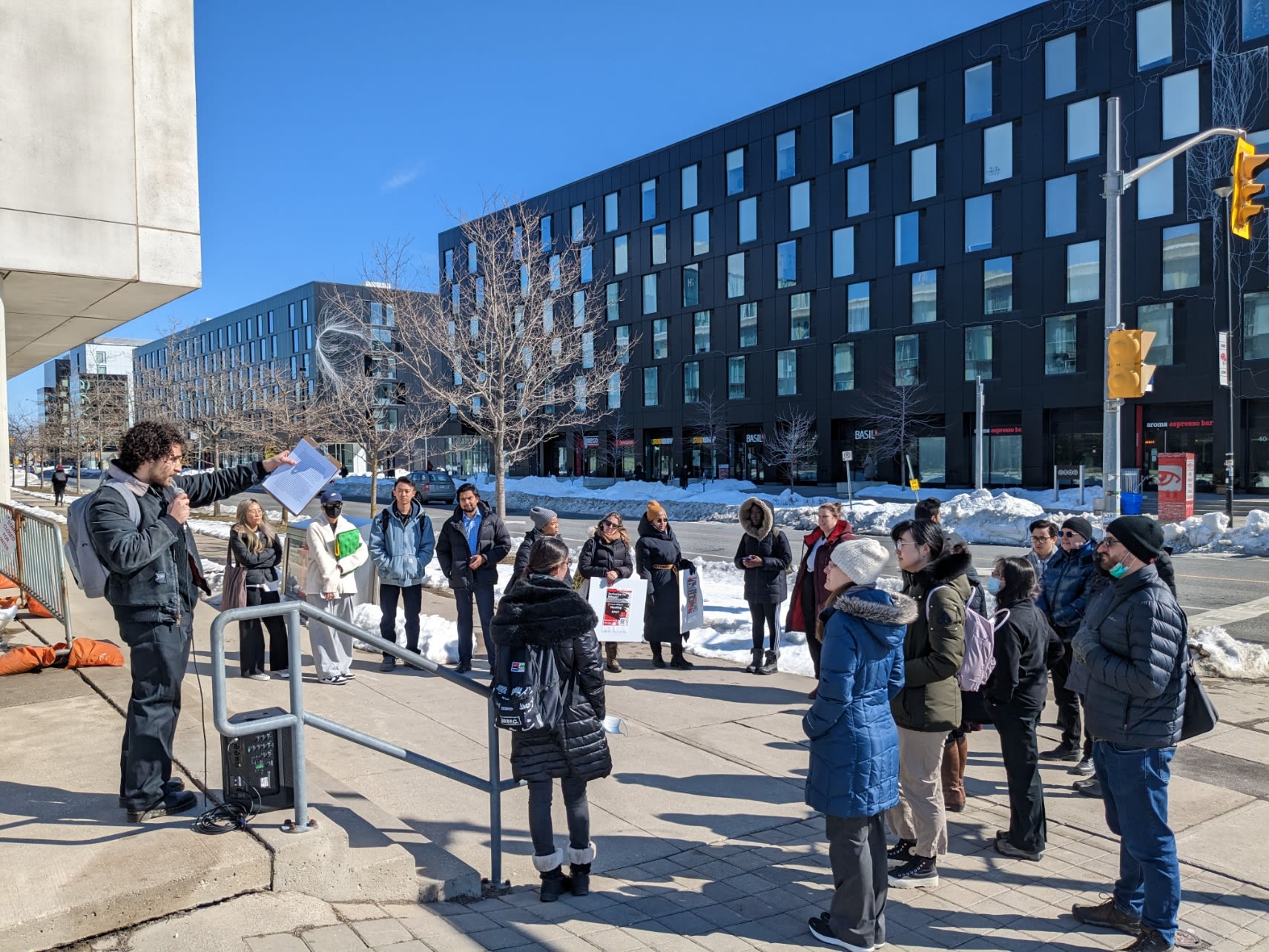
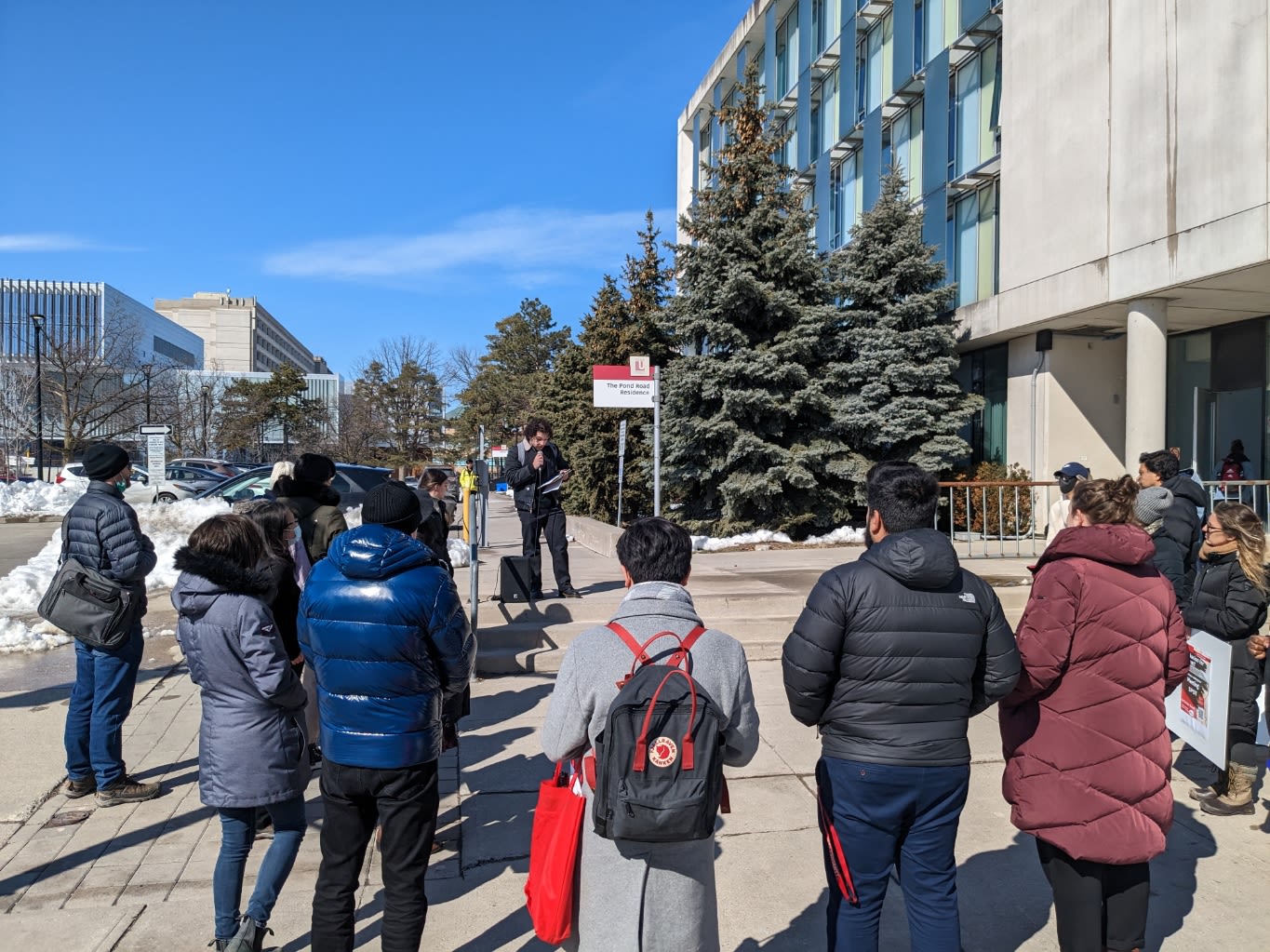
Now we continue south to the Village at York University.
STOP NUMBER FOUR: YORK UNIVERSITY VILLAGE
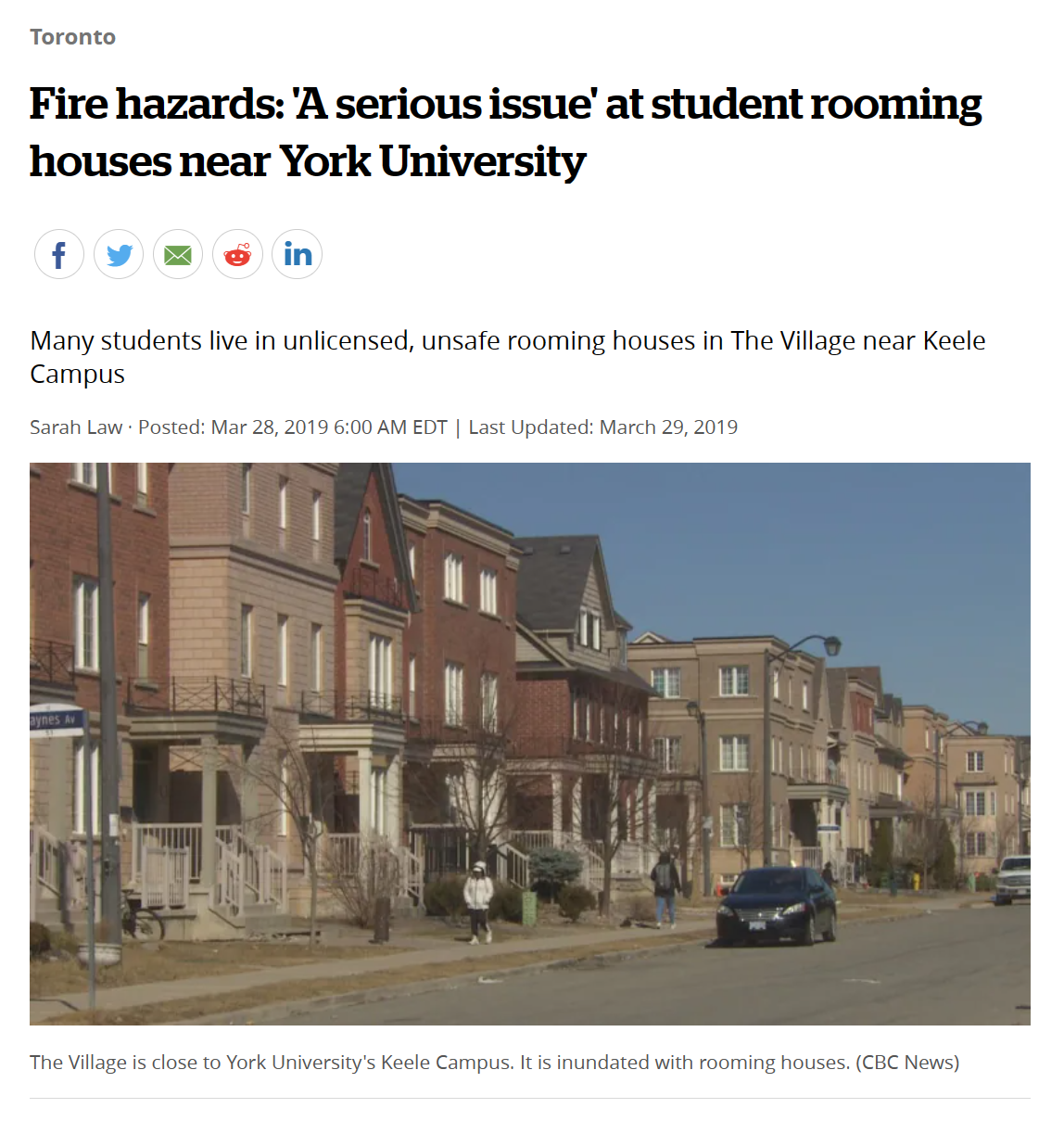
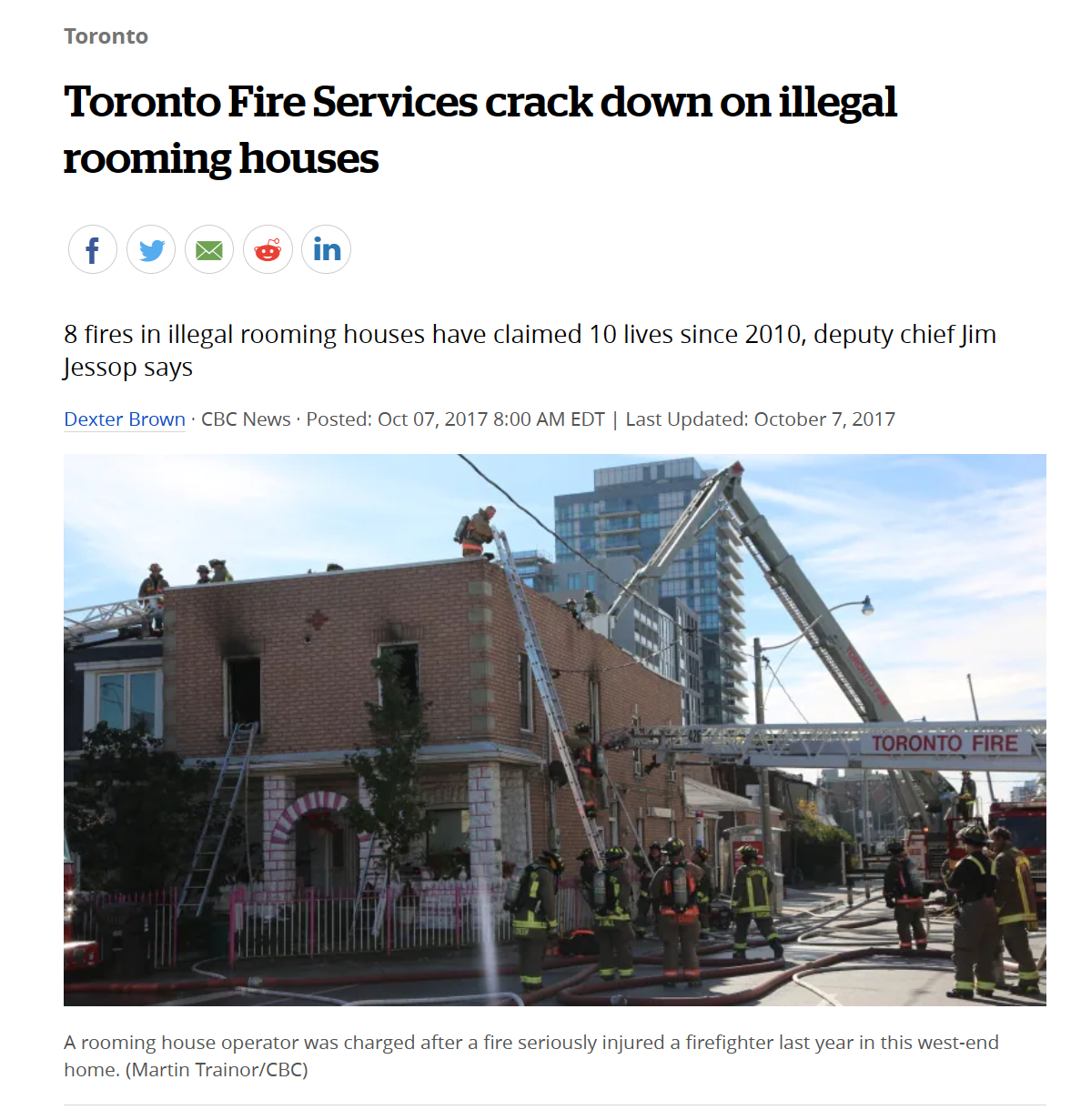
As we continue past the Quad, we begin to see the outer perimeter of campus and the residential and industrial infrastructure that comprises it. As mentioned at the previous stop, the circumstances of unaffordable housing have pushed students to find housing off-campus. These students have moved into what are deemed as affordable housing enclaves. Such enclaves are home to low-income and working-class residents, who's rent is subject to change due to this flow of incoming students. This process, referred to as studentification, works similarly to gentrification, where the flow of students transforms the social, cultural, and economic circumstances of these neighbourhoods. The relatively affordable nature of these homes paired to with their proximity to campus, makes it a highly competitive market for real-estate. To meet this demand, landlords adjust rent prices for the tenants already living there and push out those who don't have the means to make that change. This process of studentification is what has occurred in what is referred to as The Village, just south of the campus border.
The approximately 800 privately-owned homes comprising The Village also have a bad reputation of violating tenant rights. Many landlords have converted their properties into rooming houses with as many as 16 rooming units per house. The thing is that rooming houses are not actually legal in North York. This hasn't stopped landlords from capitalising on student desperation, leaving many tenants to offer units without windows, sliding doors, or even carbon monoxide detectors. A CBC News correspondent interviewed Deputy Fire Chief Jim Jessop in 2019, where he mentioned that they have had "a number of fatalities over the last number of years in rooming houses that did not comply with the Ontario Fire Code''. Although the conditions have proven to be unsafe, many students have feared voicing their concerns as these spaces are pretty much the only option they have available to them. In 2017 there was a crackdown in The Village where landlords were caught disobeying mandatory regulations, in the end however, students were the ones suffering the consequences, as many were evicted and simply swapped out for new tenants with marginal changes in living conditions.
A team of Toronto-based researchers, including York professor Luisa Sotomayor, were recently able to identify a multitude of problems that students face with student housing options. Their paper found that the lack of affordable housing left students vulnerable to illegal clauses in rental agreements, often aimed at exploiting their lack of legal knowledge or their fear of losing access to the unit. This was reported in rooming houses with high numbers of international students and women. With this research and the multitude of violations of housing regulations, the York University administration has voiced their concerns urging students to follow tips like "know your rights" and "ensure living quarters are safe", citing that they have no control over off-campus accommodations. However, this is an issue born of unaffordable housing options; when on-campus options are limited and are far away from a reasonable price point, students who seek an education are willing to make life-threatening sacrifices. This is why students must collectively pressure the university into facilitating the creation of new affordable housing.
To learn more about the Quad, the village, and get help finding housing as a student, go to the York Community Housing Association webpage. They are a student led-community outreach group that helps community members manage their housing issues while mobilizing and advocating for action on housing in the York community.
Let's head back into the middle of campus for stop number five: the YFS Food Support Centre in the Second Student Centre.
STOP NUMBER FIVE: YFS FOOD SUPPORT CENTRE
This stop is the Second Student Centre (005 Second Student Centre), and this is where the Food Support Centre is located. The food support centre is run by the York Federation of Students in partnership with the North York Harvest Food Bank. This food bank is accessible to all members within the York community, not just students. It is walk-in, once per week, and the amount of food given out varies depending on if you’re registered individually or as a family. Currently, this food bank services 2,300 users a month. Right now, we are currently in a food crisis, and so the food bank has to supplement the food available at the food bank by buying food alongside donations in order to support the amount of people that come and access it. The food is pre-packaged, and there are varieties of food options like vegetarian, vegan, regular.
For some people, the Food Support service is enough. For others it is not, and the centre also works in pointing out other supports on campus that individuals may need. Individual situations differ, and alongside food, individuals may be experiencing other challenges like lack of housing or personal crises. People at the Food Support service acknowledge the fact that people do not live single-issue lives, and they want to provide more services than just food. They want to go beyond providing people with food to thinking critically about why this is an issue in the first place.
When we look at the meal plan, the cheapest meal plan you can get is the bronze meal plan, which costs $4,250. The meal plans become more expensive if you wish to choose the silver, gold, or platinum meal plan. When talking to Marsha, who has been a student at York University for a long time, she has noticed the increase in prices, and increases that have happened within the last year. When paying for these expensive meal plans, you are also paying for residence, and tuition, and textbooks, and anything else you may need to be able to attend York University. These costs add up and put a strain on students to be able to afford everything that they require to attain further education. Not to mention, there are times when the Wi-Fi is not working which disrupts the system and forces students with meal plans to spend out of pocket unnecessarily.
The contract with the foodservice company at York University also changed in the August of last year to Chartwells, a subsidiary of the Compass Group Canada. Alongside this shift in corporate food contracts, the prices also went up. This change in the foodservice company was done with no prior student consultation. No consideration was given to students’ opinions about what food they want on campus, their feelings on the prices, or how this change will affect them. No one in the student union, or residence, or in the general student body was made aware until it happened.
On the press release of this news, York University’s Executive Director for the Ancillary Services Department Anthony Barbisan said, “we asked for a lot of different ways for food services to be enhanced based on our extensive consultations with the community”, which is opposite to what was told to me by Marsha from the York Federation of Students. He went on to say that the partnership with Chartwells will deliver “quality, wellness, sustainability, inclusion, authenticity, and affordability.”
The York Federation of Students and individuals working at the food support centre try to bring up these issues to university administrators in the meetings that happen a few times a year. They have previously asked the university about creating bursaries that can help pay for food and tuition, which has not happened yet. They also try to start conversations with students through their event weeks by giving free food to people as a way of starting discussion around the issue of food on campus. The student body wants to plant the seeds in the minds of the students about things we should be fighting for.
It is important to highlight that the Food Support Centre is run by the undergraduate student union. Students saw the issue existing of food security for students and led the creation of the Food Support Centre. This was and remains students taking care of other students. Bringing back one point of my discussion with Marsha in how she said food is one of the last priorities for funding, and on how students are forming community and helping each other through this centre makes it clear that the university is not doing enough. It is making it more and more difficult for students to afford food on campus. No matter if you are an international student, or a resident of the York community, being able to access food on campus should be a priority for the university. It is the duty of the university to serve the student body that pays to attend the institution.
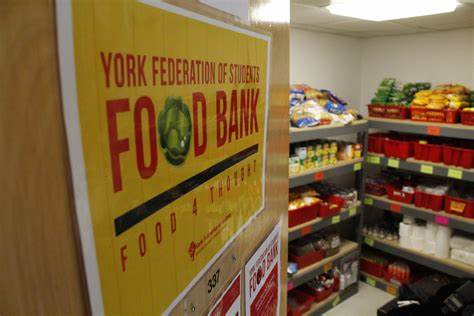
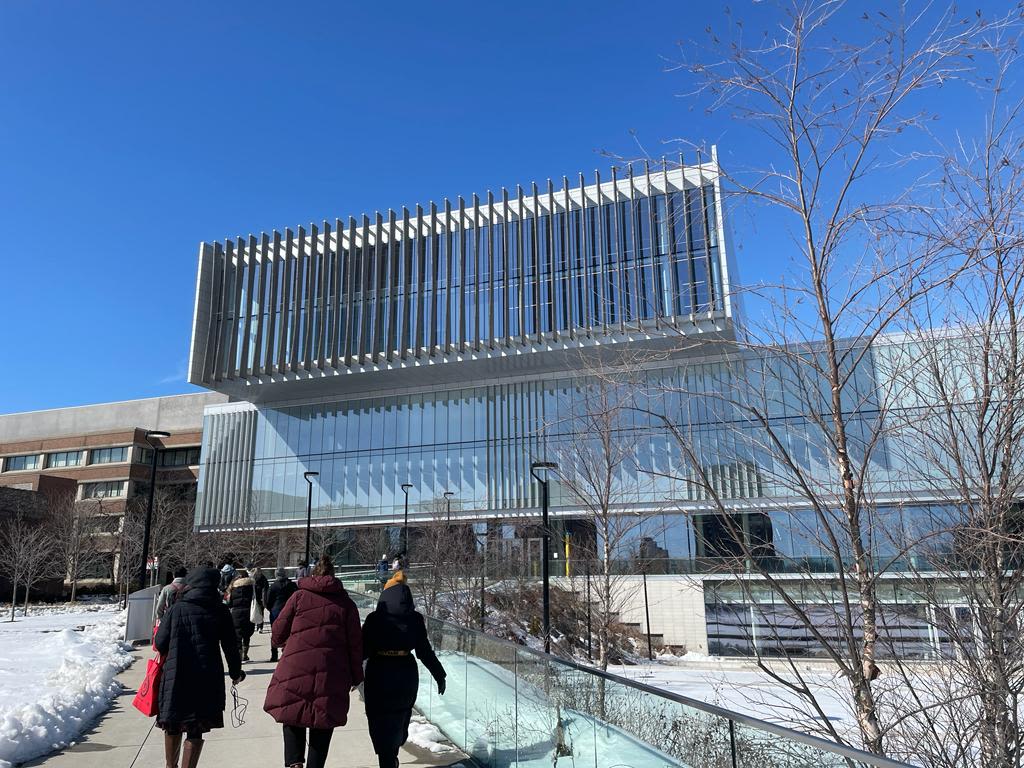
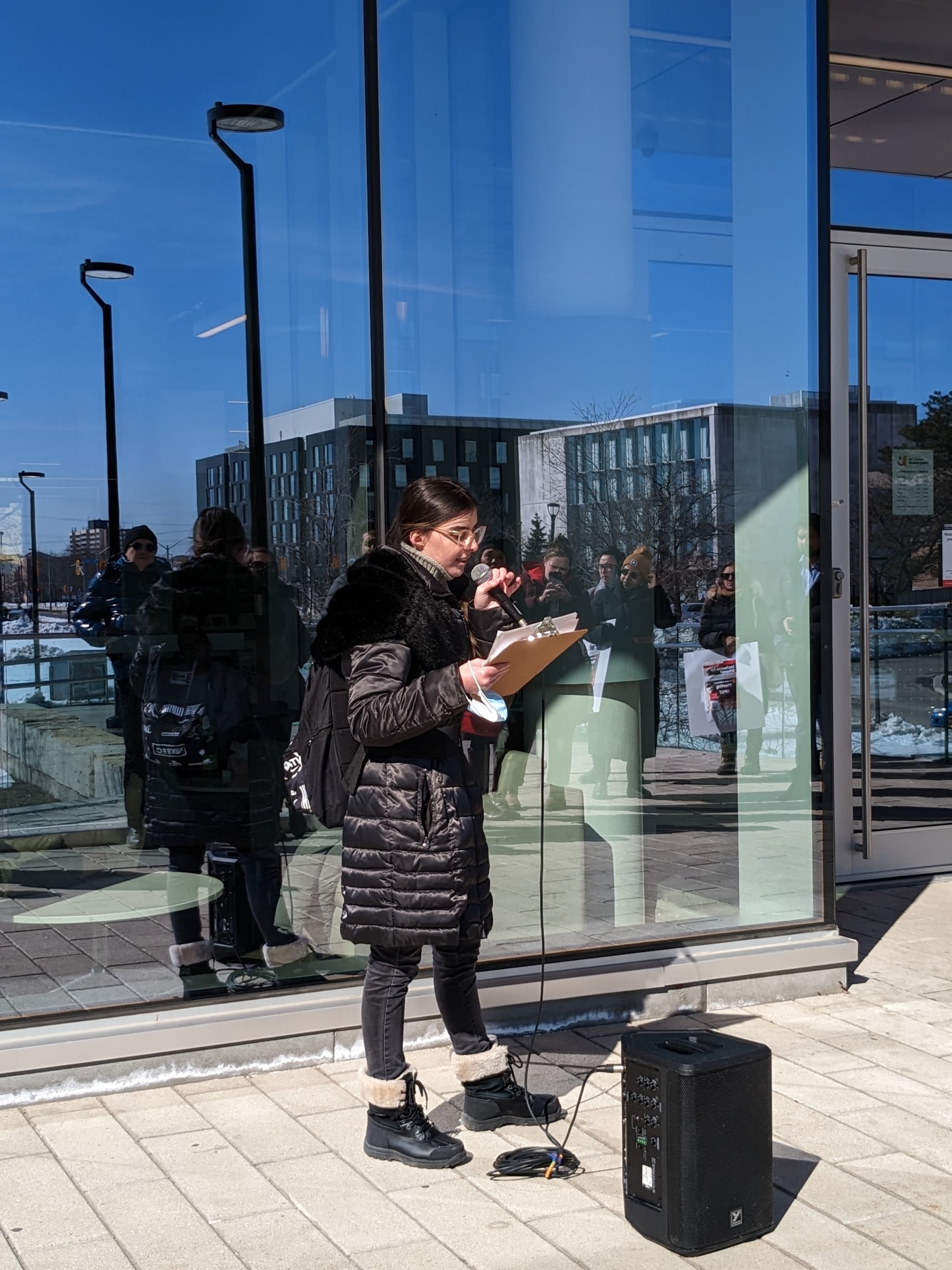
Time for our sixth and final stop: York University Security Office.
STOP NUMBER SIX: YORK UNIVERSITY SECURITY OFFICE
The last stop on our campus tour "Inclusion for Whom?" is the York University Security Office. Among their other roles, security guards employed by the university are tasked with physically excluding persons from campus. In other words, they are the literal faces of the exclusion of certain bodies from the York University community.
But how often is this happening? Their own security logs indicate quite a lot. In the 2019/2020 academic year, there were 263 calls to security for "trespassing," more than almost all other categories other than medical emergencies, "cause disturbance," and theft under $5,000. Quite tellingly, there was an almost fivefold increase in the number of trespassing calls after the opening of the two TTC stations on campus in late 2017.
In the security services' own weekly incident logs, we see that they explicitly use the language of "community member" and "non-community member" in describing the people they interact with during calls. Community members are assumed to be students, staff, and faculty of the university, while "non-community members" would be anybody else. How they make this determination is unclear. What is apparent, however, is that many of the "non-community members" who are trespassed from campus are people who are experiencing houselessness. While this is not made explicit in the logs, it can often be determined via context: people found sleeping in hallways or unoccupied classrooms, and the like. Most of these people are physically removed from campus by security, either via the subway or Toronto Police.
York University is currently undertaking a Security Services Review. The institution claims that "[c]entral to the review process will be anti-racist, justice, equity, diversity, and inclusion. The review will take a critical and holistic approach to enhancing safety and security at York to address real issues and concerns and establish an alternative security services model."
How can a security service that spends up to 30% of its time trespassing people from campus place "inclusion" at the centre of its model? Who will define what inclusion means in this context, and which members of our community it will be applied to?
We ask one last time, "Inclusion for Whom?"

